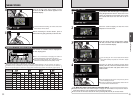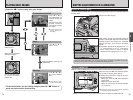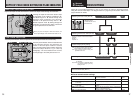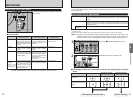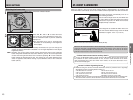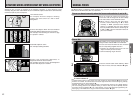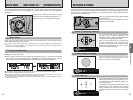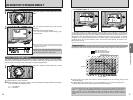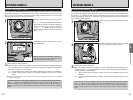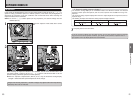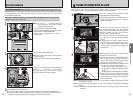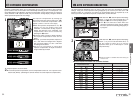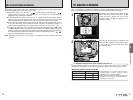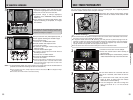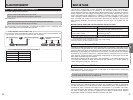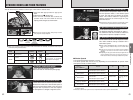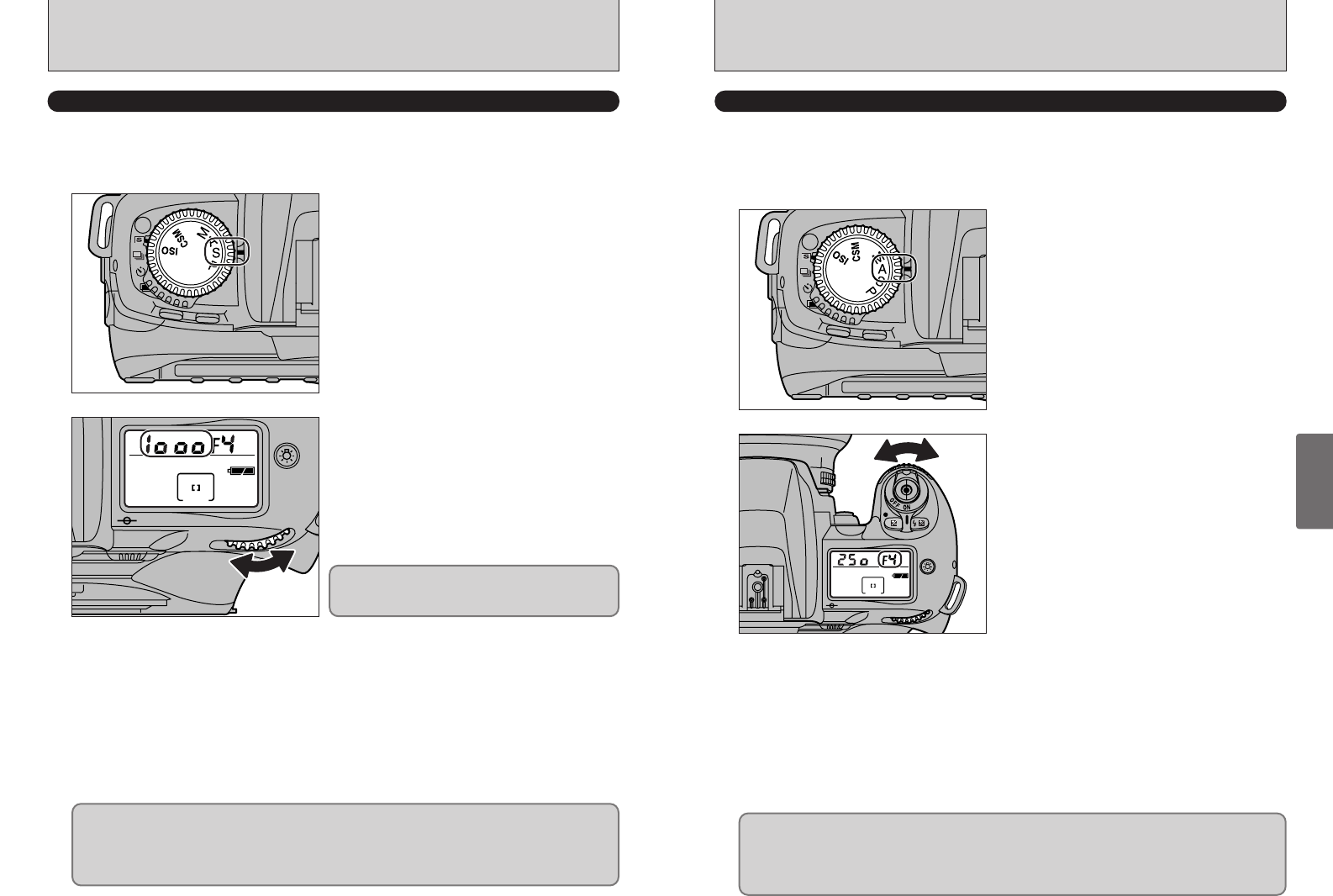
48 49
EXPOSURE MODES S EXPOSURE MODES A
Advanced Photography
3
A APERTURE-PRIORITY AUTO
In this mode, the photographer sets the aperture (narrowest aperture to widest aperture) and
the camera automatically controls the shutter speed. This mode is best for photographs where
the priority is on the depth of field (the area where objects are in focus), such as shots where
both near and distant objects are in clear focus (narrowest apertures) or where the background
is out of focus (widest apertures).
S SHUTTER-PRIORITY AUTO
In this mode, the photographer sets the shutter speed (1/4000 to 30 sec.) and the camera
automatically controls the aperture setting. This mode is best when the shutter speed takes
priority, such as shots where a fast shutter speed is used to freeze the action or a slow shutter
speed is used to convey the sense of movement.
1
Rotate the exposure mode select dial to select
“S”.
h If “
™” is selected in “M Manual” exposure
mode and the exposure mode is changed to
Shutter-Priority Auto without cancelling
“™”, “™” blinks and the shutter locks.
When this occurs, select a shutter speed other
than “™”.
2
Set the shutter speed (1/4000 to 30 sec.) on the
main command dial.
3
Compose picture, focus and shoot.
h When the subject is too dark or bright, one of the following warning indications will appear
in the top display panel or viewfinder (Electronic analog exposure display will also indicate
the amount of under- or overexposure).
i
£: Select higher shutter speed. If the warning indication still remains on, use ND filtre.
i ¢: Select a slower shutter speed. If the warning indication still remains on, use the
flash.
●
!
For long exposures, it takes several seconds for the Access lamp to light after the image shown in the preview
window has disappeared.
Images shot with long exposures (1 second or
longer) may appear coarse and may also be
affected by noise such as white dots.
If you select the “P”, “S” or “A” exposure mode when you are not using a Nikkor lens with a built-in
CPU, “
`” appears on the top display panel and in the viewfinder and you cannot take pictures.
When this occurs, you can take pictures by setting the exposure mode to “M” and using the
aperture ring on the lens to set the aperture. Note that you cannot use the camera's exposure
meter.
1
Rotate the exposure mode select dial to select
“
A
”
.
2
3
Use the sub-command dial to set the aperture
(narrowest aperture to widest aperture).
Compose picture, focus and shoot.
h When the subject is too dark or too bright, one of the following warnings will appear in the
top display panel or viewfinder (Electronic analog exposure display will also indicate the
amount of under- or overexposure).
i
£: Select smaller aperture (larger f-number). If the warning indication persists, use an
ND filtre.
i ¢: Select larger aperture (smaller f-number). If the warning indication persists, use the
flash.
If you select the “P”, “S” or “A” exposure mode when you are not using a Nikkor lens with a built-in
CPU, “
`” appears on the top display panel and in the viewfinder and you cannot take pictures.
When this occurs, you can take pictures by setting the exposure mode to “M” and using the
aperture ring on the lens to set the aperture. Note that you cannot use the camera's exposure
meter.



